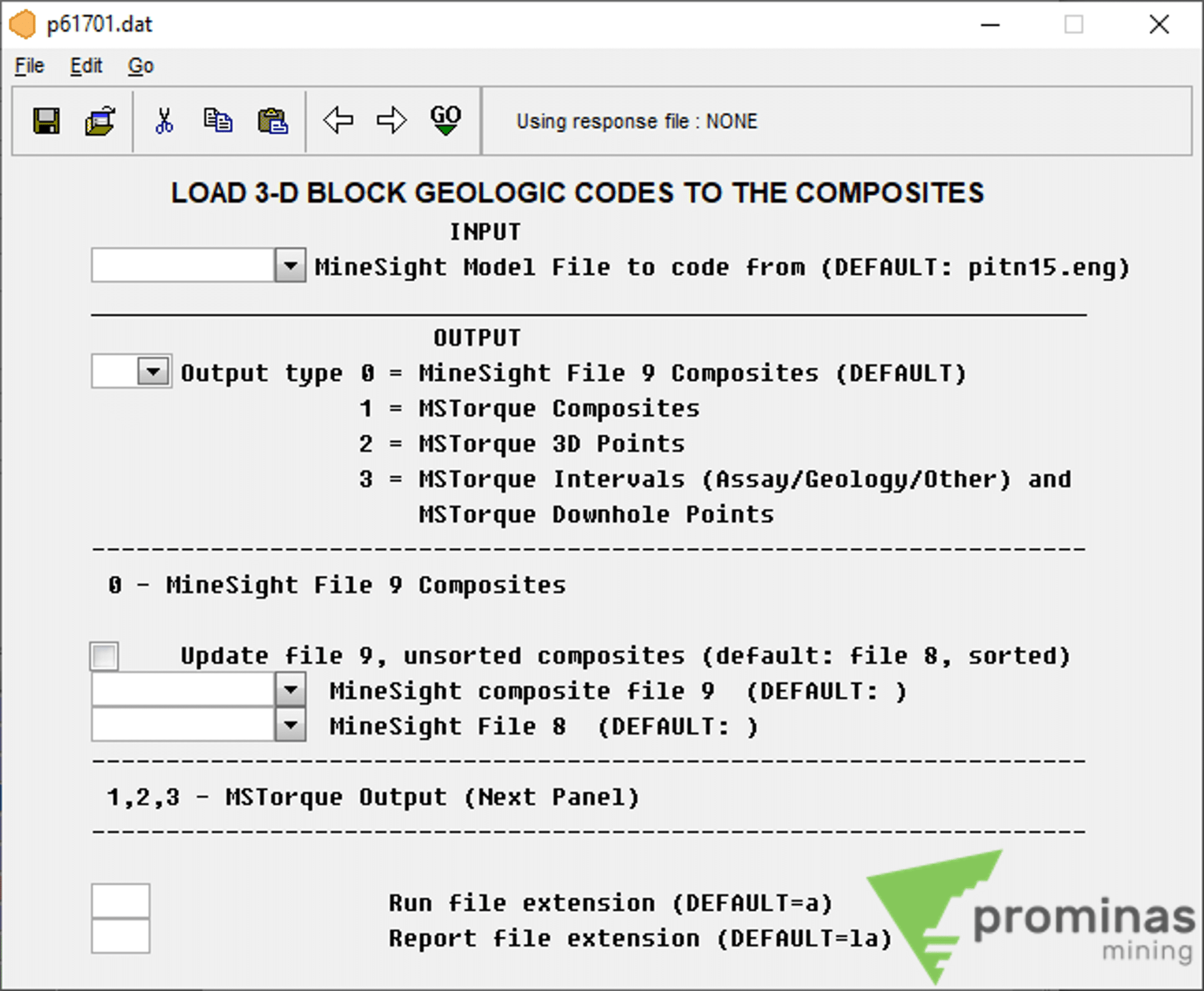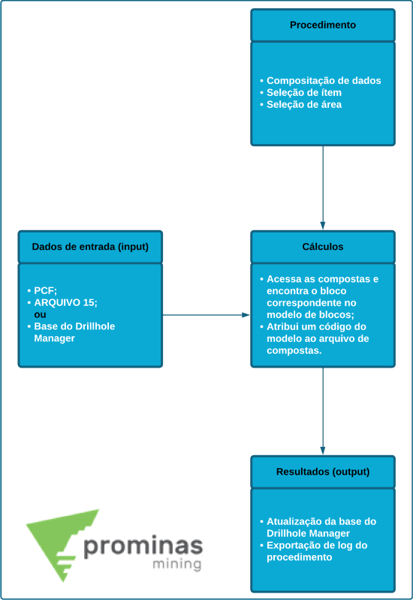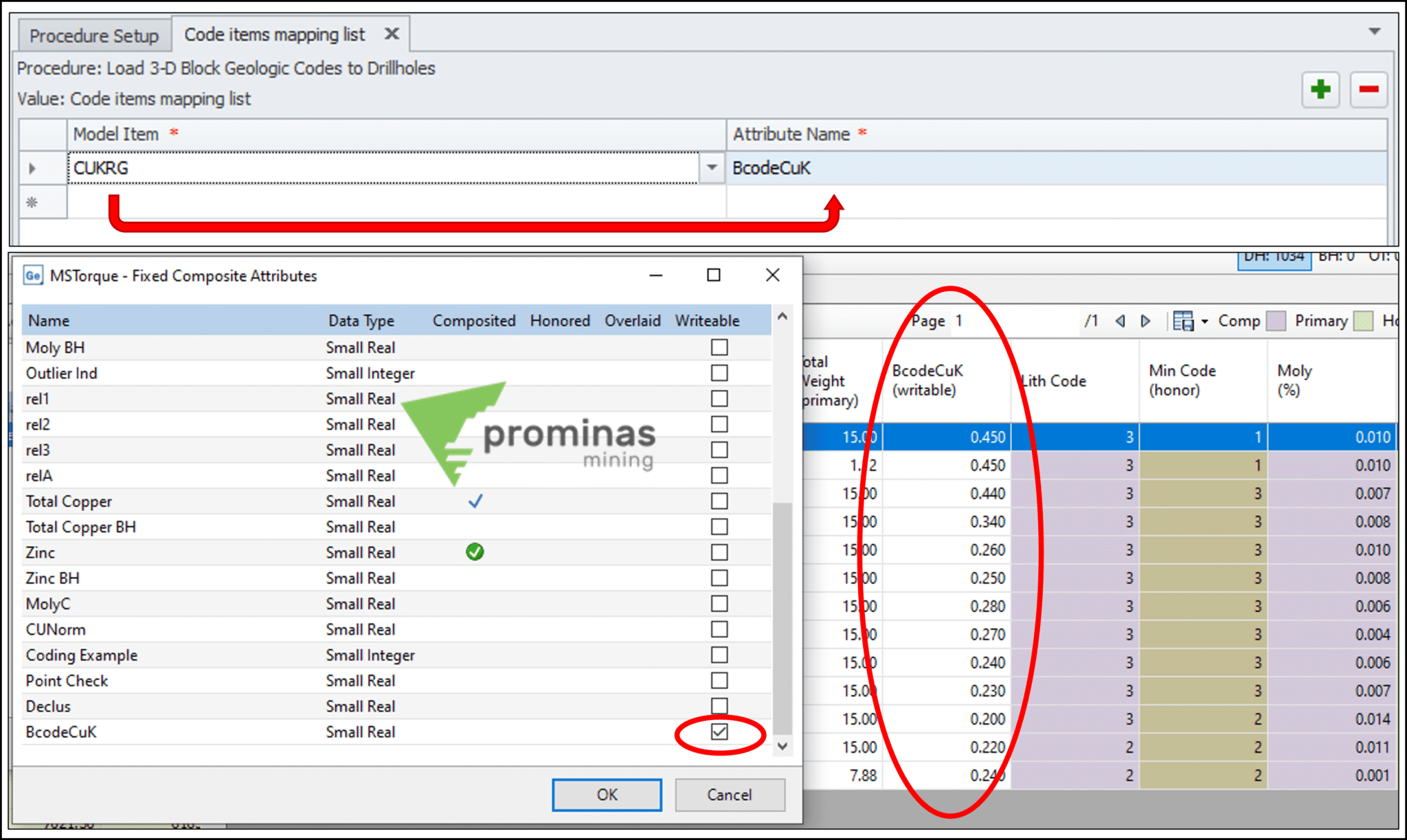
Backload to Composites: Routine for editing compounds with information from a block model.
Did you know that the MinePlan makes it possible to write information from a block model into a database Drillhole Manager?
Using the Compass or the logic It is possible to edit a database Drillhole Manager with information about the blocks where a certain interval of a composite or 3D point is located. The procedure in question can be found through the code p61701.dat or by name Backload to Composites at the Compass (Figure 1) or even by name Load 3-D Block Geologic Codes to Drillholes at the logic (Figure 2).

Figure 1: “Backload to Composites” procedure opened in Compass.

Figure 2: “Load 3-D Block Geologic Codes to Drillholes” procedure open on logic.
The procedure works as follows: using as input data (inputs) the PCF of a project (*10.dat file), a block model (*15.dat file), and a database of the Drillhole Manager, the procedure calculates which model blocks contain certain intervals of a composite (or 3D points) and then rewrites this information directly into the database. In this way, the outputs This is information recorded in the Drillhole Manager database. Figure 3 illustrates the intersection of a hole with the blocks of a model. Next, Figure 4 presents a flowchart of how the procedure works.

Figure 3: Interaction of a drilling hole with a block model.

Figure 4: Flowchart of how the procedure works Backload to Composites.
For the procedure to be successful, it is necessary to configure an attribute to receive the information in the database. Drillhole Manager. This attribute must be marked as writable in the composite attribute settings and must be mapped into the logic next to the block model item whose values will be written to the database. Figure 5 highlights the attribute configuration, its correlation with a specific item in the block model and the result of the procedure.

Figure 5: Association of model item and attribute in the database, configuration of the attribute in the composite and result of the procedure.
A good way to assess the reliability of the estimate depending on the composites is using the Pearson Correlation Coefficient. Figure 6 shows an example of a scatter plot (prepared with the HxGN MinePlan Sigma) analyzing the linear correlation between the levels obtained in the compounds compared to the corresponding ones estimated for the model blocks. The result, in this case, is a coefficient worth 0.848, which indicates a strong positive correlation.

Figure 6: Correlation graph between compound contents and estimates for corresponding blocks (prepared with the HxGN MinePlan Sigma).
Good practices for using the procedure draw attention to the choice of input files. It is recommended to create your own variable for the procedure. Furthermore, this variable must be editable in the composite. After the procedure, it will be possible to use the variable as a validation of your estimate, comparing the estimated value with the value of the original composite (Figure 6).
So, did you like these tips? For more information about this or other procedures at MinePlan, contact our team and we will be happy to serve you.
To the next!!!
Team Prominas Mining




